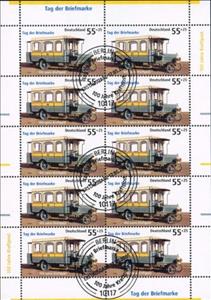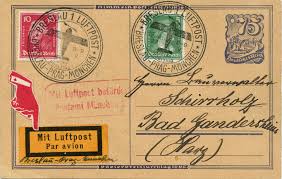Mini Sheet: Stamp Day,Centenary of Post Bus (Germany, Federal Republic 2005)
Stamp Day,Centenary of Post Bus (Germany, Federal Republic 2005)
12 May (Germany, Federal Republic ) within release Stamp Day 2005 goes into circulation Mini Sheet Stamp Day,Centenary of Post Bus face value 10*(55+25) Euro cent
| Mini Sheet Stamp Day,Centenary of Post Bus in catalogues | |
|---|---|
| Michel: | Mi: DE 2456KB |
Mini Sheet is square format.
Grinding Perforation 14Mini Sheet Stamp Day,Centenary of Post Bus it reflects the thematic directions:
A car is a wheeled, self-powered motor vehicle used for transportation and a product of the automotive industry. Most definitions of the term specify that cars are designed to run primarily on roads, to have seating for one to eight people, to typically have four wheels with tyres, and to be constructed principally for the transport of people rather than goods. The year 1886 is regarded as the birth year of the modern car. In that year, German inventor Karl Benz built the Benz Patent-Motorwagen. Cars did not become widely available until the early 20th century. One of the first cars that was accessible to the masses was the 1908 Model T, an American car manufactured by the Ford Motor Company. Cars were rapidly adopted in the United States of America, where they replaced animal-drawn carriages and carts, but took much longer to be accepted in Western Europe and other parts of the world.
Postal history is the study of postal systems and how they operate and, or, the study of the use of postage stamps and covers and associated postal artifacts illustrating historical episodes in the development of postal systems. The term is attributed to Robson Lowe, a professional philatelist, stamp dealer and stamp auctioneer, who made the first organised study of the subject in the 1930s and described philatelists as "students of science", but postal historians as "students of humanity". More precisely, philatelists describe postal history as the study of rates, routes, markings, and means (of transport).


